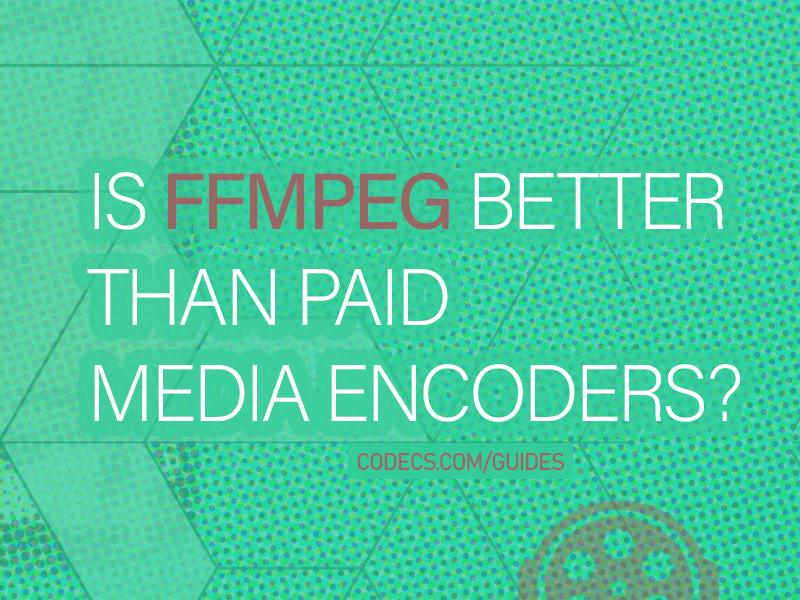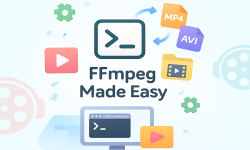When it comes to video encoding, two tools often stand out: FFmpeg and Adobe Media Encoder (AME). While FFmpeg is a free, open-source solution, AME is a paid option as part of Adobe's Creative Cloud.
In this article, we’ll explore whether FFmpeg is truly better than a paid media encoder by using Adobe Media Encoder as a direct comparison.
Cost: Free vs Subscription
The most obvious difference between FFmpeg and Adobe Media Encoder is the cost. FFmpeg is completely free and open-source. This makes it accessible to everyone, from individual creators to large companies, without any licensing fees.
On the other hand, Adobe Media Encoder is part of the Adobe Creative Cloud subscription, which includes tools like Premiere Pro and After Effects. You can’t get AME on its own; you’ll need to pay for an Adobe plan, making it a more expensive option overall.
Customization: Deep Control vs User-Friendly Presets
One of the biggest advantages of FFmpeg is the level of customization it offers. Since FFmpeg is a command-line tool, users can fine-tune every aspect of their media encoding. Whether it's adjusting bitrate, choosing specific codecs, or applying filters, FFmpeg gives you complete control over your workflow.
On the other hand, Adobe Media Encoder is designed for ease of use, with a graphical user interface (GUI) that makes it simple to export videos quickly. It comes loaded with presets for common export formats, which saves time but offers less control compared to FFmpeg. This makes AME a great choice for users who want a hassle-free experience and don’t need to dive deep into technical settings.
Performance: Speed and Optimization
Performance can be tricky to compare because it depends heavily on how each tool is used.
FFmpeg can be faster than Adobe Media Encoder, especially when optimized with the right settings, like hardware acceleration (e.g., NVIDIA’s NVENC). Users who understand how to configure FFmpeg properly can squeeze out high performance and speed.
Adobe Media Encoder, however, is optimized for Adobe’s ecosystem. If you're working on projects in Premiere Pro or After Effects, AME works seamlessly to handle batch processing, large file sizes, and complex projects.
While it might not always match FFmpeg’s speed for simple tasks, it excels in more professional, heavy-duty workflows.
Format Support: Extensive vs Common Formats
One area where FFmpeg excels is format support. It can handle nearly every media format and codec imaginable, making it ideal for those who need to work with obscure, rare, or legacy formats. This flexibility is one reason why FFmpeg is often the go-to choice for developers and advanced users.
Adobe Media Encoder also supports a wide range of formats, but its strength lies in handling the most common video, audio, and image formats used in professional production. If you need to export a project for YouTube, TV broadcast, or other standard platforms, AME’s presets will have you covered. However, it doesn’t offer the same broad range of compatibility as FFmpeg.
Usability: Command Line vs Graphical Interface
FFmpeg relies on command-line usage, which can be a barrier for some users. While this allows for more customization and automation, it does have a learning curve. Users who are comfortable with command-line operations will find FFmpeg to be incredibly powerful.
In contrast, Adobe Media Encoder is designed to be user-friendly. With its drag-and-drop interface and easy-to-use export settings, it’s much simpler for beginners or those who want a faster, more straightforward process. This makes AME ideal for people who need results quickly without delving into technical details.
FFmpeg or Adobe Media Encoder?
So, is FFmpeg better than paid media encoders like Adobe Media Encoder? It depends on what you value in your workflow.
FFmpeg is the right choice if you need deep customization, compatibility with many formats, and a free tool that can handle complex tasks. It’s perfect for developers, tech-savvy users, and those who don’t mind spending time learning its commands.
Adobe Media Encoder shines if you’re looking for a user-friendly solution that integrates seamlessly with Adobe products. It’s ideal for professionals who prioritize ease of use, speed, and reliable performance within established workflows.












How to Download HEVC Video Extension for Free
Worked flawlessly on some hi def files I was backing up to my PC from my cell phone. Yep, ...
Read More →AV1 vs H.265: Which Video Codec Should You Ch...
@anon123456 only because HW support is lacking. With proper HW decoding it would be the same. It was the ...
Read More →Best Player for Subtitles (2025 Guide)
@P.A. Blok You're right, thanks for the feedback! We've updated the guide to clarify that VLC does auto-detect ...
Read More →